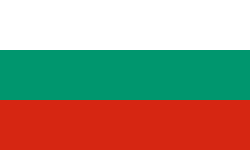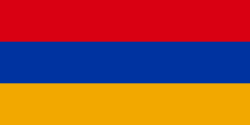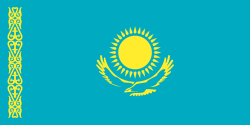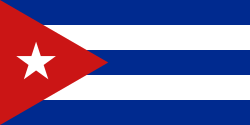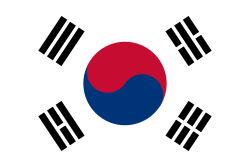Omíd Naurózí
| Omíd Naurózí | |
|---|---|
(c) Tasnim News Agency, CC BY 4.0 | |
| Osobní informace | |
| Rodné jméno | امید نوروزی (Omid Norouzi) |
| Datum narození | 18. února 1986 (37 let) |
| Místo narození | Behargan, okres Sepidan, |
| Stát | Írán |
| Sportovní informace | |
| Klub | Širáz (klub) |
| Trenéři | Elijás Kánúnpur (الیاس کانون پور, zač.) Mohammadalí Čámijání (محمدعلی چمیانی, osob.) Mohammad Baná (repr) |
| Kategorie | lehká váha |
| Zápasnický styl | zápas řecko-římský |
| Účast na LOH | 2012, 2016 |
| Údaje v infoboxu aktuální k listopadu 2018 | |
| Přehled medailí | ||
|---|---|---|
| zlato | LOH 2012 | ř.-ř. −60 kg |
| Mistrovství světa v zápasu řecko-římském | ||
| zlato | MS 2011 | bantamová váha |
| stříbro | MS 2014 | lehká váha |
Omíd Hádží Naurózí (* 18. února 1986) je bývalý íránský zápasník – klasik, olympijský vítěz z roku 2012.
Sportovní kariéra
Je rodákem z lúrské vesnice Behargan (بهرغان). Vyrůstál a zápasit začal v 9 letech v Širázu pod vedení Elijáse Kánúnpura. Pod vedením trenéra Mohammadalí Čámijáního se od 14 let specializoval na řecko-římský styl.[1] V íránské mužské reprezentaci se prosazoval od roku 2009 ve váze do 60 kg. V roce 2012 startoval jako úřadující mistr světa na olympijských hrách v Londýně a postupem do finále proti Gruzínu Revazi Lašchimu potvrdil roli favorita. Taktický první finálový set vyhrál 1:0 na technické body potom co se ubránil nařízenému parteru půl minuty před koncem. Ve druhém setu po minutě vytlačil Lašchiho ze žíněnku a bodový náskok 1:0 udržel do konce hrací doby. Získal zlatou olympijskou medaili.
Po olympijských hrách v Londýně doplácel na spory představitelů íránské zápasnické federace úzce napojené na íránský politický systém (parlamentní, prezidentské volby) a v reprezentaci se často neobjevoval.[2] V roce 2016 se kvalifikoval na olympijské hry v Riu, kde vypadl ve čtvrtfinále s Gruzínem Šmagim Bolkvadzem 0:2 na technické body. Vzápětí ukončil sportovní kariéru.
Výsledky
| Turnaj | 2009 | 2010 | 2011 | 2012 | 2013 | 2014 | 2015 | 2016 |
|---|---|---|---|---|---|---|---|---|
| 23 | 24 | 25 | 26 | 27 | 28 | 29 | 30 | |
| -60 | -66 | |||||||
| Olympijské hry | 1. | úč. | ||||||
| Mistrovství světa | úč. | úč. | 1. | — | 2. | — | ||
| Asijské hry | 1. | — | ||||||
| Mistrovství Asie | — | — | — | — | — | — | — | — |
Odkazy
Reference
- ↑ Archivovaná kopie. chehreblog.com [online]. [cit. 2018-11-27]. Dostupné v archivu pořízeném z originálu dne 2018-11-27.
- ↑ Archivovaná kopie. namehnews.ir [online]. [cit. 2018-11-27]. Dostupné v archivu pořízeném z originálu dne 2018-11-27.
Externí odkazy
 Obrázky, zvuky či videa k tématu Omid Nourúzi na Wikimedia Commons
Obrázky, zvuky či videa k tématu Omid Nourúzi na Wikimedia Commons - Omid Nourúzi v databázi Olympedia (anglicky)
- Výsledky Omída Naurózího na uni-leipzig.de
Média použitá na této stránce
Flag of Iran. The tricolor flag was introduced in 1906, but after the Islamic Revolution of 1979 the Arabic words 'Allahu akbar' ('God is great'), written in the Kufic script of the Qur'an and repeated 22 times, were added to the red and green strips where they border the white central strip and in the middle is the emblem of Iran (which is a stylized Persian alphabet of the Arabic word Allah ("God")).
The official ISIRI standard (translation at FotW) gives two slightly different methods of construction for the flag: a compass-and-straightedge construction used for File:Flag of Iran (official).svg, and a "simplified" construction sheet with rational numbers used for this file.
Olympic Rings without "rims" (gaps between the rings), As used, eg. in the logos of the 2008 and 2016 Olympics. The colour scheme applied here was specified in 2023 guidelines.
Olympic Rings without "rims" (gaps between the rings), As used, eg. in the logos of the 2008 and 2016 Olympics. The colour scheme applied here was specified in 2023 guidelines.
Finská vlajka
Autor: F l a n k e r, Licence: CC BY-SA 2.5
Flag of the Kingdom of Sardinia (1851-1861) and of the Kingdom of Italy (1861-1946). Use: Civil flag and ensign. In a governmental or a military context, the crowned version (see Crowned version) was always used (as State flag and naval ensign).
Autor: F l a n k e r, Licence: CC BY-SA 2.5
Flag of the Kingdom of Sardinia (1851-1861) and of the Kingdom of Italy (1861-1946). Use: Civil flag and ensign. In a governmental or a military context, the crowned version (see Crowned version) was always used (as State flag and naval ensign).
this is the flag of the Soviet Union in 1936. It was later replaced by File:Flag of the Soviet Union (1955-1980).svg.
(c) I, Cmapm, CC BY-SA 3.0
The flag of the Soviet Union (1955-1991) using a darker shade of red.
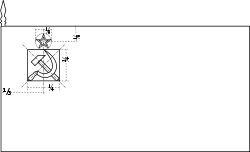
(c) I, Cmapm, CC BY-SA 3.0
The flag of the Soviet Union (1955-1991) using a darker shade of red.

Autor: Scroch, Licence: CC BY-SA 3.0
Flag of Bulgaria (1971-1990). Flag of Bulgaria with Bulgarian coat from 1971.
Autor: Scroch, Licence: CC BY-SA 3.0
Flag of Bulgaria (1971-1990). Flag of Bulgaria with Bulgarian coat from 1971.
Flag of Second Polish Republic and later People's Republic of Poland in period from March 29, 1928 to March 10, 1980. Red shade used here is HTML "vermilion" #E34234. Proportion 5:8.
Flag of Second Polish Republic and later People's Republic of Poland in period from March 29, 1928 to March 10, 1980. Red shade used here is HTML "vermilion" #E34234. Proportion 5:8.
Flag of South Korea (1949-1984)
Georgian flag in Pantone MS.
Flag of South Korea from October 1997 to May 2011. In May 2011, the exact colors were specified into their current shades.
(c) Tasnim News Agency, CC BY 4.0
2016 Summer Olympics, Greco-Roman Wrestling 66 kg - Shmagi Bolkvadze v Omid Norouzi





















